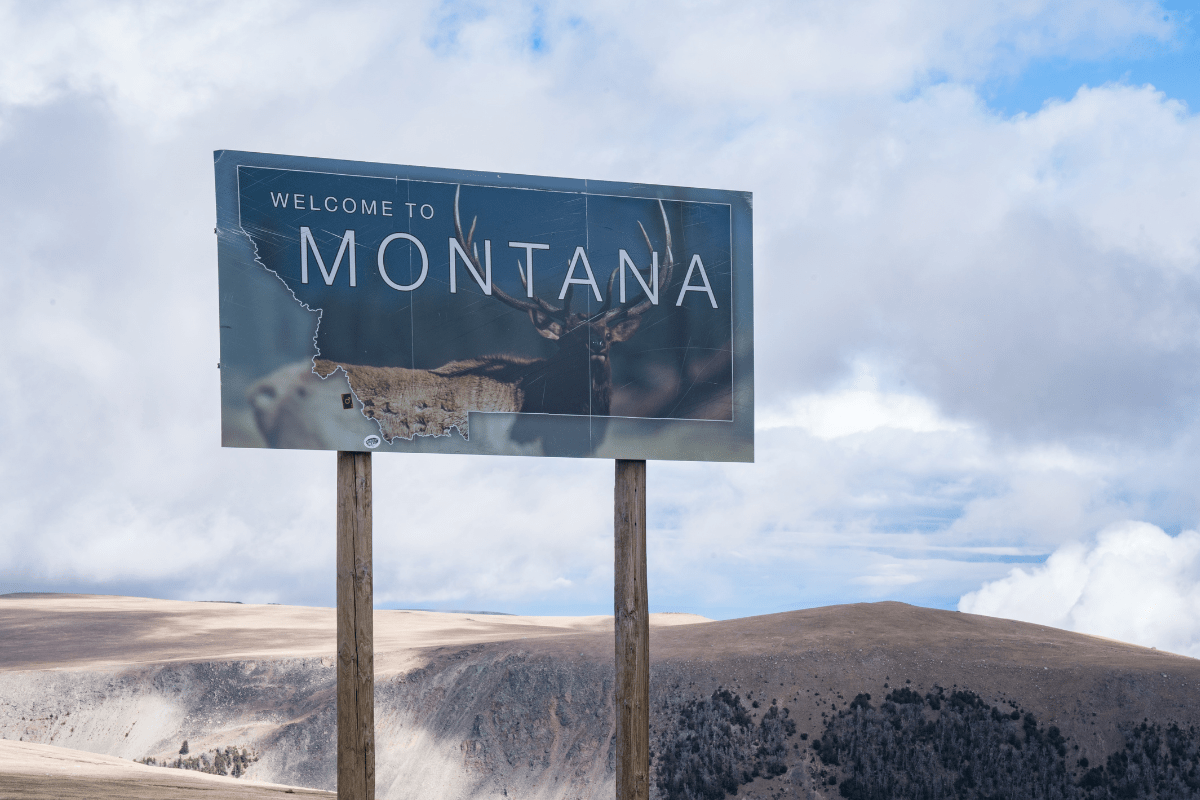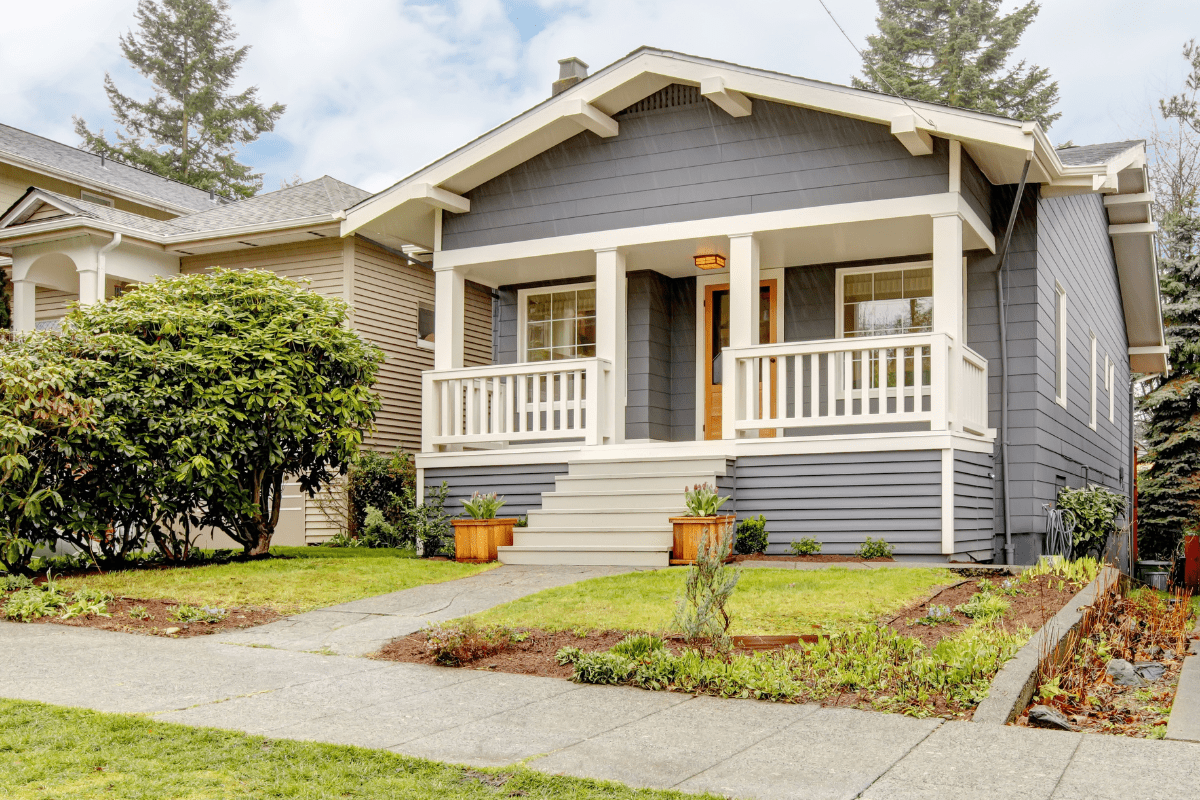Living in Montana means accepting that Mother Nature has a twisted sense of humor. One day you're enjoying a balmy 70°F afternoon, and the next morning you wake up to find your outdoor faucet has transformed into an ice sculpture worthy of a winter festival.
Why Montana homes need special attention
Let me paint you a picture of what we're dealing with here. Montana holds the coldest temperature record in the contiguous United States at a mind-numbing -70°F. But wait, there's more! We also hit 117°F in the summer because apparently, we needed both extremes. That's a 187-degree temperature swing that would make even the hardiest thermostat cry uncle.
Here's the kicker though. All this maintenance madness actually pays off. Studies show that preventive maintenance generates a 400-545% return on investment. Yeah, you read that right. For every dollar you spend preventing problems, you save four to five dollars on repairs. Meanwhile, waiting until something breaks costs 2-5 times more than fixing it early. It's like the universe rewards you for adulting properly.
Understanding our wild weather patterns
Montana sits at the crossroads of Arctic, Pacific maritime, and continental air masses, which sounds fancy but basically means we get weather mood swings that would concern a therapist. Western Montana gets the maritime treatment with 22-30 inches of precipitation annually, while Eastern Montana sees a mere 12-14 inches but makes up for it with dramatic temperature tantrums.
The infamous Chinook winds deserve their own reality show. These warm winds can raise temperatures 40-50°F within hours. Imagine going to bed in a parka and waking up ready for shorts. Your house foundation experiences this same whiplash, and trust me, concrete doesn't handle mood swings well.
The seasonal maintenance dance
Spring in Montana is like that friend who shows up late to every party. You think it's here, then boom, April snowstorm. But when it finally arrives, you've got a narrow window to assess winter's damage and fix things before summer's brief appearance.
Spring maintenance reality check
Start your inspections by April 15 when temperatures consistently stay above 40°F. Any earlier and you're basically trying to diagnose problems while everything's still frozen solid. Focus on these critical areas:
- Roof and foundation damage assessment
- Ice dam aftermath evaluation
- Gutter cleaning (wait until May)
- Exterior crack and gap identification
- Drainage system performance check
Here's something nobody tells you about spring maintenance. That innocent-looking crack in your foundation? When water freezes, it expands by 9% and creates pressures exceeding 220 MPa. That's engineer-speak for "this tiny crack will become a massive problem if you ignore it."
Montana building codes require foundations to extend 3-4 feet below grade minimum, but if you're in the mountains or dealing with our lovely eastern Montana clay soil, you might need to go deeper. That clay can create over 4 inches of seasonal movement. Your foundation basically does the cha-cha every year.
Summer's sprint to get everything done
Montana summer is like a speed-dating event for home maintenance. You get 70-90 days to accomplish what other states spread across six months. No pressure, right?
The sweet spot for major projects runs from June 15 to August 31. Need roof work? Book your contractor in March because everyone else has the same idea. Thinking about painting? You need temperatures between 60-80°F with humidity below 50% and no rain for 48 hours. In Montana, that's basically asking for a unicorn, but you can usually find these conditions between June 20 and August 20.
Don't forget about wildfire season, which runs May through September. Creating defensible space isn't just smart; it's required in many areas. You need:
- 30 feet of cleared space
- Ember-resistant vent covers
- Regular roof cleaning schedule
- Pine needle removal routine
- Trimmed tree branches
Fall winterization (aka panic season)
If spring is fashionably late, fall is that friend who leaves the party early without saying goodbye. First frost can hit mountain areas in late August, and Bozeman typically sees its first frost by September 16.
This is when Montana homeowners collectively realize they've procrastinated on winterization. Don't be like us. Here's your must-do list with actual deadlines:
Critical fall tasks:
- Winterize plumbing by October 1
- Schedule heating service by September
- Blow out irrigation systems
- Install storm windows
- Clean and inspect chimneys
- Stock emergency supplies
- Test backup heat sources
Missing these deadlines isn't just inconvenient. Frozen pipes can cost $4,000+ to repair, and that's if you're lucky enough to catch them before they flood your basement. I learned this lesson the hard way when I thought "early October is probably fine" for winterization. Spoiler alert: it wasn't.
Winter active management strategies
Winter maintenance in Montana isn't a set-it-and-forget-it situation. It's more like having a high-maintenance pet that weighs several thousand pounds and sits on your property.
Snow management becomes your part-time job December through March. After 6+ inches of accumulation, you need to start thinking about roof clearing, especially the first 3-4 feet from the edges where ice dams love to party. When snow depths hit 2 feet or ice starts building up, it's time to call in the professionals. Yes, it costs money. No, it's not as expensive as a collapsed roof.
Indoor humidity control might sound boring, but maintaining 30-50% humidity prevents condensation damage while keeping you from turning into a human raisin. Plus, properly humidified air feels warmer, so you can lower your thermostat a degree or two and save on heating costs. See? Science can be your friend.
Montana-specific challenges that test your patience
Let's talk about the unique joys of Montana homeownership that nobody mentions in those glossy real estate brochures.
The roof load reality
Montana mandates a minimum 30 psf snow load for roof design, but that's like saying you need a jacket when it's cold. Technically true, but woefully inadequate for many areas. Mountain locations often need 60+ psf capacity. The Montana Ground Snow Load Finder is your friend here. Use it, love it, bookmark it.
Metal roofing has become the darling of Montana homeowners for good reason. It sheds snow like a boss, but you need to account for thermal expansion and ice dam prevention at the eaves. Those ice dams cost Montana homeowners millions annually in water damage. The prevention formula is simple: R-49 minimum attic insulation plus balanced ventilation equals a happy roof.
Heating system marathon
Your heating system in Montana runs 275+ days annually. That's like asking your car to drive cross-country every single year without stopping. Annual professional servicing by September isn't optional; it's survival.
Change those filters every 1-3 months during winter. I know it seems excessive, but your furnace is working harder than a caffeinated squirrel in December. Wood stoves and fireplaces provide crucial backup heat, but they need annual cleaning unless you enjoy chimney fires. Pro tip: they're not as fun as they sound.
Wildlife roommate situations
Montana wildlife doesn't recognize property lines. Bears particularly enjoy seeking shelter November-March, and Montana Fish, Wildlife & Parks regulations mean you can't just evict them with a strongly worded letter.
Prevention is your only real strategy:
- Steel chimney caps
- Hardware cloth screening
- 6-foot tree clearance
- Motion sensors
- Secure garbage storage
The money talk (saving and spending wisely)
Here's where we discuss everyone's favorite topic: spending money on things that aren't fun. The golden rule is to budget 1-4% of your home's value annually for maintenance. Got a $200,000 home? That's $2,000-$8,000 per year. Older homes built before 1960 might need up to 8% because, let's face it, they've seen some things.
DIY vs. crying for help
Some maintenance tasks offer legitimate DIY savings of 50-70%. These include:
DIY-friendly tasks:
- Filter replacements
- Basic weatherstripping
- Gutter cleaning
- Storm window installation
- Simple caulking
- Deck staining
- Basic landscaping
But Montana requires professional licensing for electrical work over 90 volts, complex plumbing repairs, and HVAC refrigerant handling. Winter emergency rates will make your wallet weep, with plumbers charging $120-$450 per hour and electricians hitting $200 hourly. Suddenly that September furnace tune-up for $75 looks like a bargain, doesn't it?
Energy efficiency goldmine
Montana utilities actually want to give you money for being energy efficient. NorthWestern Energy offers $1,000 for air-source heat pumps and $3,000 for geothermal systems. Montana-Dakota Utilities provides $300 rebates for high-efficiency furnaces.
Solar installations in Montana cost $2.90-$3.58 per watt with 6-11 year payback periods. Over their lifetime, they can save you $40,000+. Plus, Montana has net metering and property tax exemptions for renewable energy improvements. It's like the state actually wants you to save money. Weird, right?
Getting help when you need it
The Montana Weatherization Assistance Program serves households earning up to $62,400 for a family of four. They provide mechanical system repairs, insulation upgrades, and safety improvements at no cost. There's no shame in taking advantage of programs designed to help. Your tax dollars fund them, so you might as well benefit.
Building codes and contractor reality
Montana enforces 2018 International Building Codes with state-specific amendments. Every roof must handle minimum 30 psf snow loads, though many areas require much more. Contractors need state registration, proper insurance, and fees run $70-$125. Always verify credentials because Bob's Discount Roof Repair might not be your best bet when facing Montana winters.
Insurance considerations that matter
Montana homeowners pay $1,347-$2,418 annually for insurance, but maintenance lapses can void claims faster than you can say "frozen pipes." Common coverage gaps include flood damage (separate policy needed), earthquake damage, and frozen pipe damage if you didn't maintain proper heating. Document everything with photos, receipts, and contractor communications. Your future self will thank you.
Emergency preparedness without the paranoia
Winter storm preparation in Montana isn't doomsday prepping; it's common sense. The state recommends maintaining:
Emergency kit essentials:
- One gallon water per person daily
- One month medication supply
- Alternative heating source
- Battery-powered radio
- Flashlights and batteries
- Non-perishable food
- First aid supplies
- Generator (20+ feet from house)
For frozen pipe prevention, keep cabinet doors open during extreme cold, let faucets drip, and know where your main water shutoff lives. These simple steps prevent the 3 a.m. panic when you hear water where water shouldn't be.
Your Montana maintenance action plan
Living in Montana means accepting that your house needs more attention than a needy houseplant. But here's the thing: embracing preventive maintenance with its 400%+ return on investment beats emergency repairs every single time.
Start by understanding your specific microclimate. Western Montana's moisture challenges differ wildly from Eastern Montana's temperature tantrums and Chinook wind surprises. Use local resources like MSU Extension services for weatherization training and energy audits. They're staffed by people who actually understand why your foundation moves more than a dancing contestant.
Schedule professional services early because everyone else has the same idea when September rolls around. Complete critical tasks before temperature thresholds hit. And please, for the love of all that's holy, winterize your plumbing before October.
Montana home maintenance requires shifting from a reactive "I'll fix it when it breaks" mindset to a proactive "I'll fix it before it costs me thousands" approach. The compressed construction season and extreme winter conditions mean procrastination isn't just expensive; it's potentially catastrophic.
But hey, if maintaining a home in Montana was easy, everyone would do it. Welcome to the club of hardy souls who choose to live where the air hurts your face four months a year. Your house might demand attention, but at least the views are worth it.





